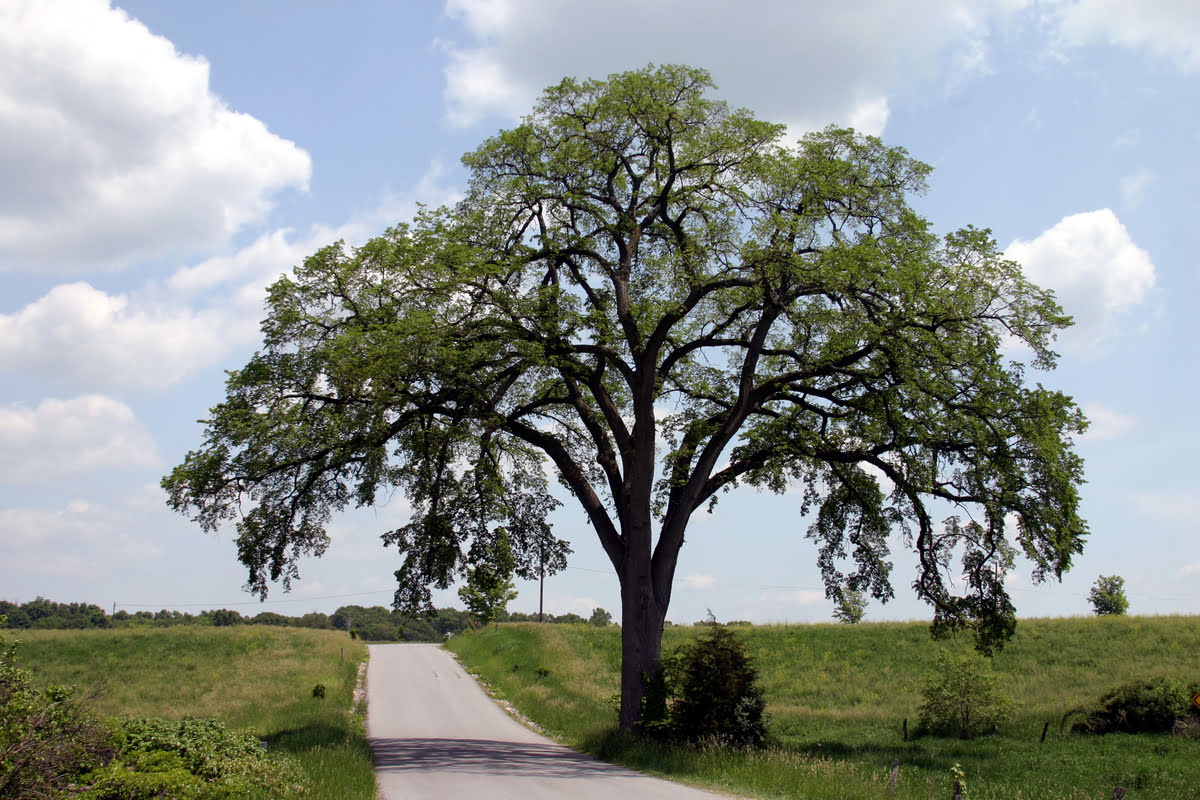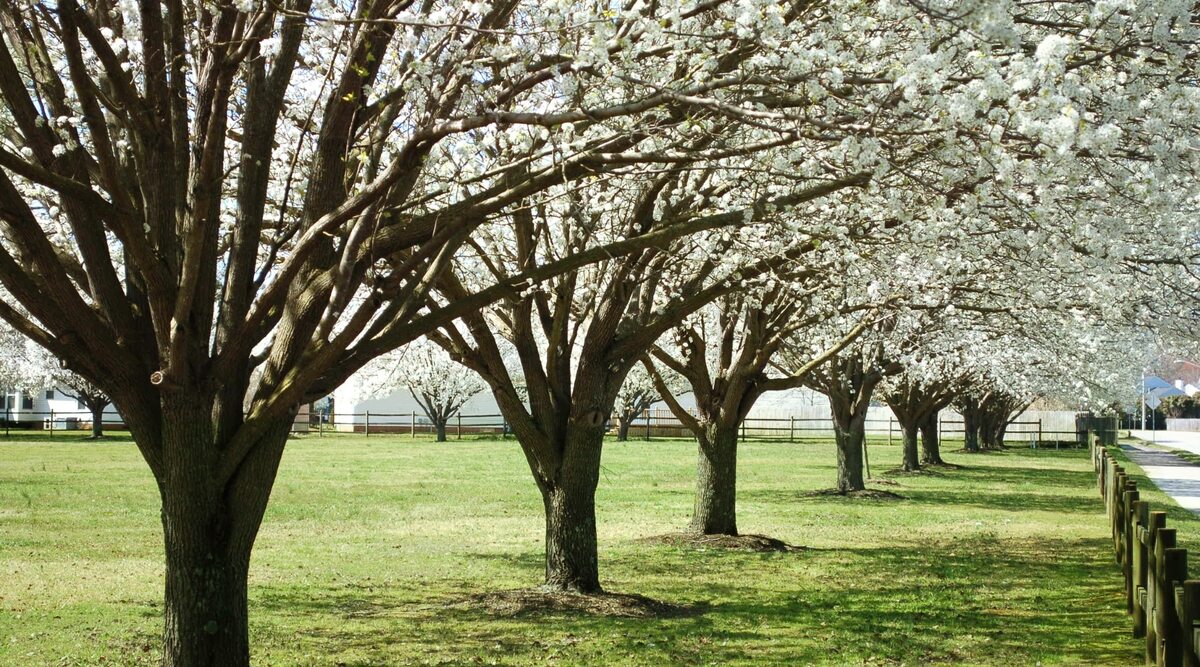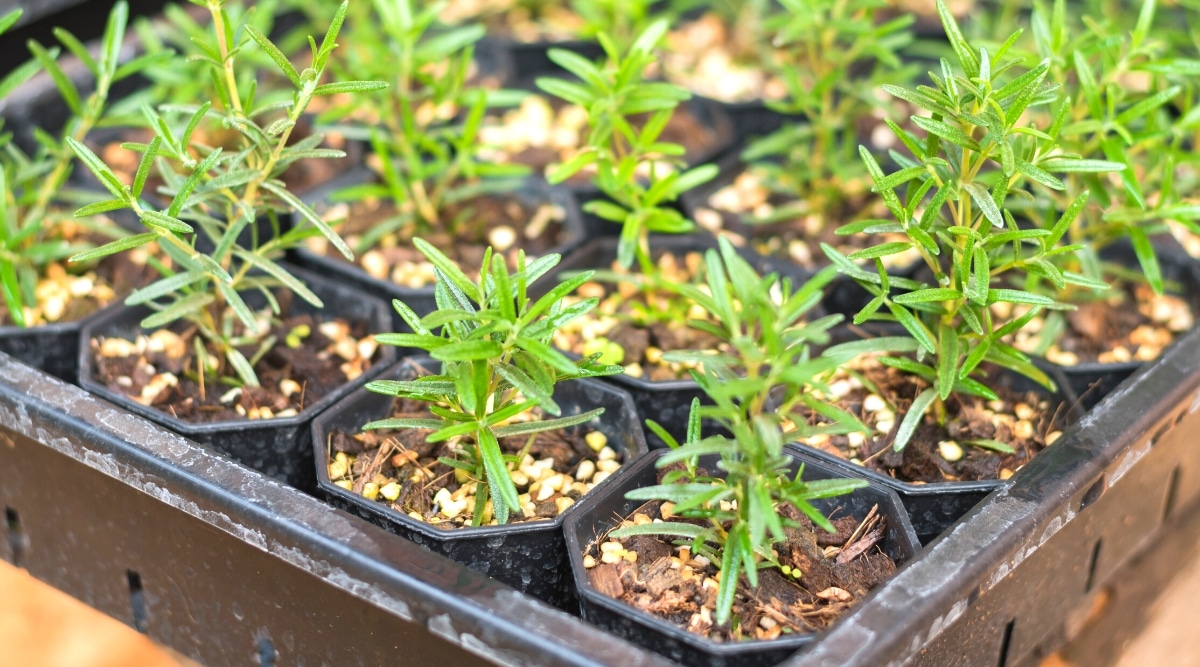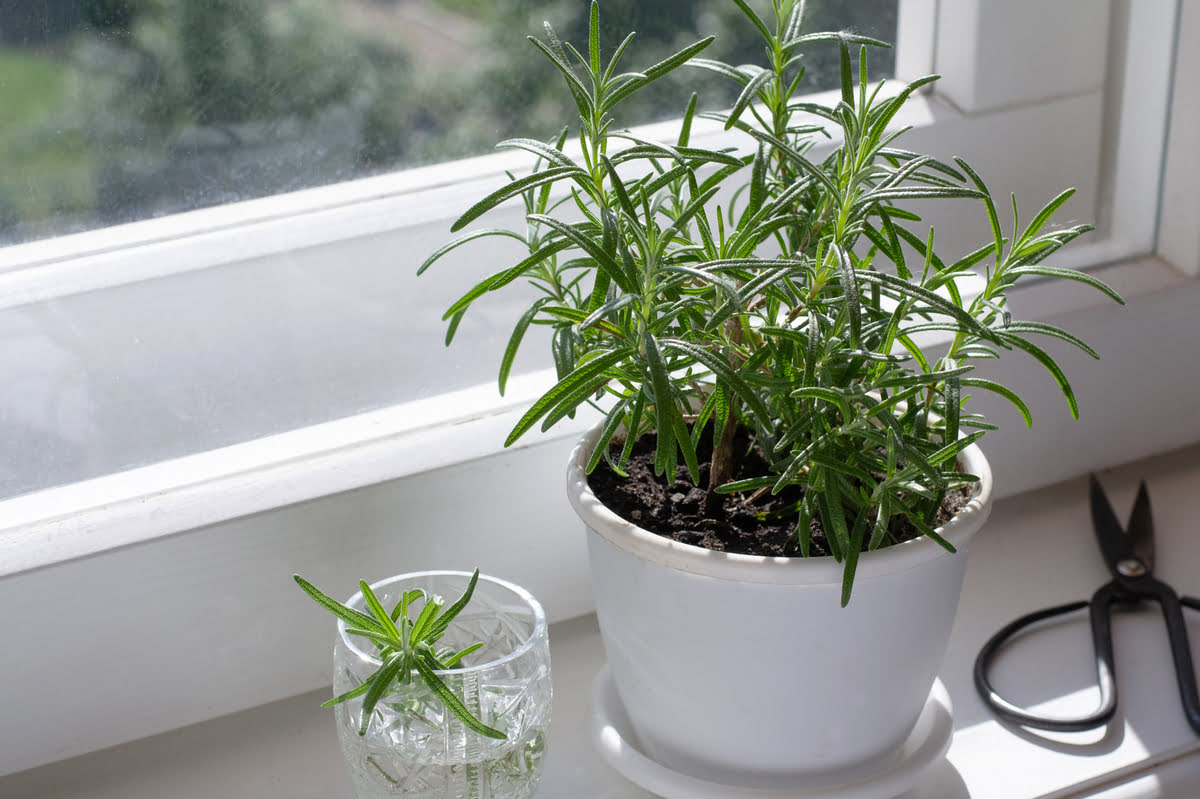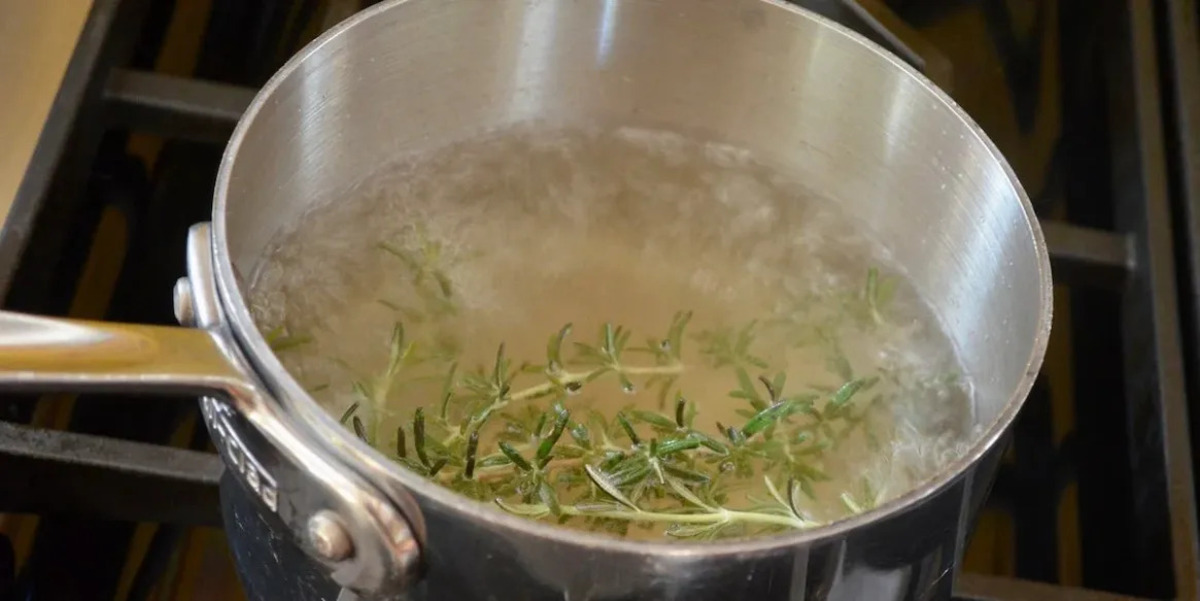Home>Types of Gardening>Edible Gardening>How Long Will A Rosemary Plant Live


Edible Gardening
How Long Will A Rosemary Plant Live
Published: January 28, 2024
Discover the lifespan of a rosemary plant and how long it will thrive in your edible garden. Expert tips for successful edible gardening.
(Many of the links in this article redirect to a specific reviewed product. Your purchase of these products through affiliate links helps to generate commission for Chicagolandgardening.com, at no extra cost. Learn more)
Table of Contents
- Introduction
- Factors Affecting the Lifespan of Rosemary Plants
- Environmental Conditions for Rosemary Longevity
- Proper Care and Maintenance for Prolonged Rosemary Life
- Common Diseases and Pests that Impact Rosemary Longevity
- Signs of a Dying Rosemary Plant
- Extending the Lifespan of Your Rosemary Plant
- Conclusion
Introduction
Welcome to the world of edible gardening, where the joy of growing your own herbs and vegetables knows no bounds. Among the array of plants that can flourish in your garden, rosemary stands out as a versatile and aromatic herb that adds a delightful flavor to various dishes. Not only does it offer culinary benefits, but it also boasts a long history of traditional medicinal use and is known for its mesmerizing fragrance.
The lifespan of a rosemary plant, like any living organism, is influenced by various factors. Understanding these factors and providing optimal care can help extend the life of your rosemary plant, allowing you to enjoy its beauty and benefits for many years. In this article, we will explore the key factors that affect the longevity of rosemary plants and provide insights on how to care for them to ensure a prolonged lifespan.
From the environmental conditions in your garden to the proper care and maintenance techniques, we will cover it all. We will also discuss common diseases and pests that can impact rosemary plants and how to identify the signs of a dying plant. By the end of this article, you will have a solid understanding of how to extend the lifespan of your rosemary plant and keep it thriving for years to come.
Factors Affecting the Lifespan of Rosemary Plants
The lifespan of a rosemary plant can vary depending on several key factors that impact its overall health and vitality. By understanding these factors, you can make informed decisions to ensure your rosemary plant thrives and lives a long and fruitful life.
1. Genetics: The genetic makeup of the rosemary plant plays a significant role in determining its lifespan. Some varieties are naturally more long-lived than others, so selecting a variety known for its longevity can increase the chances of your rosemary plant lasting for several years.
2. Age at Planting: The age of the rosemary plant when you initially plant it can also affect its lifespan. Younger plants tend to adapt better to their environment, establish stronger root systems, and have a higher chance of living longer compared to older plants.
3. Soil Quality: Rosemary plants thrive in well-draining soil with a pH level between 6 and 7. Poor soil quality can lead to waterlogged roots, root rot, and nutrient deficiencies, which can significantly shorten the lifespan of the plant. Ensure the soil is well-draining and rich in organic matter to promote optimal growth.
4. Watering: Overwatering is one of the primary causes of rosemary plant mortality. Rosemary plants prefer drier conditions and are susceptible to root rot if the soil remains consistently wet. A proper watering schedule, allowing the soil to dry out between waterings, is crucial to maintaining the health and longevity of your plant.
5. Sunlight Exposure: Rosemary plants require ample sunlight to thrive. They should receive at least six to eight hours of direct sunlight each day. Insufficient sunlight can weaken the plant, make it more susceptible to diseases, and reduce its lifespan.
6. Climate: Rosemary plants are native to the Mediterranean region and are well-suited to warm, dry climates. While they can adapt to slightly cooler temperatures, prolonged exposure to frost or freezing temperatures can damage or kill the plant. Consider the climate of your region and provide protection during cold winter months.
7. Pruning: Regular pruning helps promote bushier growth, increases air circulation, and prevents the plant from becoming leggy and woody. Proper pruning techniques can prolong the lifespan of rosemary plants by encouraging new growth and preventing disease and pest infestations.
By taking into account these factors and implementing appropriate measures, you can ensure that your rosemary plants have the best possible chance of living a long and healthy life. In the next sections, we will delve deeper into the specific environmental conditions and care techniques that can further enhance the lifespan of your rosemary plants.
Environmental Conditions for Rosemary Longevity
The longevity of your rosemary plants is greatly influenced by the environmental conditions in which they are grown. Creating the optimal conditions for your plants will not only extend their lifespan but also enhance their overall health and vigor. Let’s explore the key environmental factors that contribute to the longevity of rosemary plants.
1. Temperature: Rosemary plants thrive in warm climates and prefer temperatures between 70 to 85°F (21 to 29°C). They can tolerate slightly cooler temperatures but are sensitive to frost. If you live in a region with cold winters, consider growing your rosemary plants in containers that can be brought indoors during the colder months.
2. Sunlight: Rosemary plants require plenty of direct sunlight to thrive and should receive at least six to eight hours of sun per day. Choose a sunny location in your garden or place potted rosemary plants in areas with maximum sunlight exposure.
3. Humidity: Rosemary plants prefer low humidity levels and can struggle in areas with high humidity. If you live in a humid region, provide good airflow around the plants by spacing them apart and avoiding overcrowding.
4. Wind: While rosemary plants are generally tolerant of wind, strong gusts can damage their delicate branches and disrupt their growth. Plant them in locations that have some protection from strong winds, such as near a fence or wall.
5. Soil: Rosemary plants thrive in well-draining soil with a pH level between 6 and 7. These plants are susceptible to root rot if the soil is too compacted or waterlogged. Ensure the soil is loose, well-draining, and enriched with organic matter to create the ideal growing conditions.
6. Watering: Rosemary plants prefer a drier environment and are adapted to withstand periods of drought. Overwatering can lead to root rot and other diseases. Allow the soil to dry out between waterings, and only water when the top inch of soil feels dry to the touch.
7. Air Circulation: Proper air circulation is essential for maintaining healthy rosemary plants. Good airflow helps prevent fungal diseases and encourages strong growth. Avoid planting rosemary in areas with poor ventilation or overcrowding.
Creating the ideal environmental conditions for your rosemary plants may require some adjustments and careful observation. Monitor the temperature, sunlight, humidity, wind exposure, and soil moisture levels to ensure your plants thrive and enjoy a long life. In the next section, we will discuss the importance of proper care and maintenance in extending the lifespan of your rosemary plants.
Proper Care and Maintenance for Prolonged Rosemary Life
To ensure the longevity of your rosemary plants, it is crucial to provide them with proper care and maintenance. By following these essential practices, you can help your rosemary plants thrive and enjoy a prolonged life.
1. Watering: Rosemary plants prefer dry conditions and are drought-tolerant once established. Water them deeply but infrequently, allowing the soil to dry out between waterings. Avoid overwatering, as this can lead to root rot and other diseases.
2. Fertilization: Rosemary plants are not heavy feeders, but they can benefit from a light application of balanced organic fertilizer once or twice a year. Apply the fertilizer in early spring and again in early summer, following the package instructions.
3. Pruning: Regular pruning helps maintain the shape and health of your rosemary plants. Prune them in early spring or after flowering to promote bushier growth and prevent legginess. Remove any dead or damaged branches, and trim back about one-third of the plant’s overall size.
4. Mulching: Apply a layer of organic mulch around the base of your rosemary plants to help conserve moisture, suppress weed growth, and regulate soil temperature. Use materials like straw, wood chips, or compost, ensuring the mulch is a few inches away from the plant’s stem to prevent rotting.
5. Protection from Extreme Weather: If you live in an area with harsh winters, consider providing protection for your rosemary plants. Cover them with burlap or bring potted plants indoors during cold spells to prevent frost damage.
6. Monitoring for Pests and Diseases: Regularly inspect your rosemary plants for any signs of pests or diseases. Common pests that can affect rosemary plants include aphids, spider mites, and whiteflies. Treat infestations promptly using organic pest control methods. Watch for signs of disease, such as powdery mildew or root rot, and take appropriate measures to address them.
7. Harvesting: Regular harvesting promotes growth and encourages bushier growth. Harvest young, tender sprigs from the top of the plant, making sure not to remove more than a third of the plant’s foliage at once.
By providing consistent care and following these maintenance practices, you can ensure the prolonged lifespan of your rosemary plants. In the next section, we will explore common diseases and pests that can impact rosemary plants and discuss how to identify and manage them effectively.
Common Diseases and Pests that Impact Rosemary Longevity
While rosemary plants are generally resilient, they can be susceptible to certain diseases and pests that can impact their longevity and overall health. Understanding these common issues and taking appropriate measures to manage them is crucial for maintaining robust and thriving rosemary plants.
Diseases:
1. Powdery Mildew: Powdery mildew is a fungal disease that appears as a white, powdery coating on the leaves. It can inhibit photosynthesis and weaken the plant over time. To manage powdery mildew, ensure good air circulation around the plant, avoid overhead watering, and apply a fungicidal spray if necessary.
2. Root Rot: Root rot is caused by overly moist soil and can lead to decay of the root system. To prevent root rot, ensure well-draining soil and avoid overwatering. If root rot occurs, it may be necessary to replant the rosemary in fresh, well-draining soil.
3. Botrytis Blight: Botrytis blight, or gray mold, is a fungal disease that causes gray or brown patches on leaves and stems. It thrives in cool, moist conditions. To manage botrytis blight, remove infected plant parts, ensure good air circulation, and avoid overhead watering.
Pests:
1. Aphids: Aphids are small, soft-bodied insects that feed on plant sap. They can cause stunted growth and transmit diseases. Control aphid populations by spraying the plants with a strong stream of water or using insecticidal soap.
2. Spider Mites: Spider mites are tiny pests that suck plant juices, causing yellowing leaves and webbing. They thrive in hot, dry conditions. Control spider mites by regularly spraying the plants with water to increase humidity and using organic insecticidal sprays if necessary.
3. Whiteflies: Whiteflies are small, flying insects that gather on the undersides of leaves and can cause leaf yellowing and wilting. Control whitefly infestations by removing affected leaves, using sticky traps, and introducing natural predators like ladybugs.
Regularly inspect your rosemary plants for signs of diseases and pests. Early detection and prompt action are crucial for effective management. Applying organic pest control methods and maintaining good plant hygiene will contribute to the longevity and vitality of your rosemary plants.
In the following section, we will discuss the signs of a dying rosemary plant and provide guidance on how to revive and extend the lifespan of a struggling plant.
Signs of a Dying Rosemary Plant
Despite their resilience, rosemary plants can sometimes show signs of decline and distress. Recognizing these signs early on can help you take corrective measures to revive a struggling plant. Here are some common signs that indicate a rosemary plant may be dying:
1. Wilting: If your rosemary plant is consistently drooping or its leaves appear wilted and lackluster, it may be a sign of dehydration or root damage. Check the soil moisture levels and adjust your watering habits accordingly.
2. Yellowing Leaves: Yellowing leaves can indicate several issues, including overwatering, nutrient deficiencies, or root rot. Assess the soil drainage and adjust your watering schedule. Consider applying a balanced organic fertilizer to address nutrient deficiencies.
3. Browning or Blackened Stems: Browning or blackened stems are often a sign of fungal diseases or stem rot. Inspect the affected areas closely and take appropriate measures to address the underlying disease, such as pruning affected branches and enhancing air circulation.
4. Lack of New Growth: If your rosemary plant fails to produce new growth or looks sparse and leggy, it may indicate inadequate sunlight or pruning practices. Ensure the plant receives sufficient direct sunlight and trim back the plant to promote bushier growth.
5. Pest Infestation: Severe pest infestations, such as a heavy aphid or spider mite population, can weaken the plant and contribute to its decline. Take prompt action to control and manage pests using organic methods.
It is important to note that some signs of decline can be natural as a rosemary plant ages. However, if you observe multiple signs of distress simultaneously, it is crucial to take action to prevent further decline and potentially save the plant.
In the next section, we will discuss effective strategies to extend the lifespan of your rosemary plants and optimize their health and vigor.
Extending the Lifespan of Your Rosemary Plant
If you want to enjoy the benefits of your rosemary plant for as long as possible, there are several strategies you can employ to extend its lifespan and optimize its health and vigor:
1. Proper care and maintenance: Implement the proper watering, fertilizing, and pruning techniques discussed earlier in this article. Consistent and attentive care will help your rosemary plant thrive and resist diseases and pests.
2. Good nutrient balance: Rosemary plants appreciate a balanced supply of nutrients. Use a slow-release organic fertilizer or incorporate compost into the soil to provide the necessary nutrients for healthy growth.
3. Regular monitoring: Keep a close eye on your rosemary plant for any signs of distress, diseases, or pests. Early detection and prompt action can make a significant difference in the plant’s ability to recover and thrive.
4. Companion planting: Interspersing your rosemary plants with other beneficial companion plants, such as marigolds or basil, can help deter pests and enhance their overall health.
5. Protect from harsh weather: Shield your rosemary plants from extreme weather conditions, such as frost, strong winds, or heavy rains, by providing temporary cover or relocating potted plants indoors when necessary.
6. Regular harvest: Regularly harvest sprigs from your rosemary plant to promote new growth and prevent it from becoming woody. Avoid harvesting more than one-third of the plant’s foliage at a time.
7. Rejuvenation: If your rosemary plant starts to decline or become woody with age, consider rejuvenating it by taking cuttings and rooting them in fresh soil. This will give you a fresh, young plant with renewed vigor.
Remember, each rosemary plant is unique, and its lifespan can vary based on various factors. By following these strategies and tailoring them to the specific needs of your plant, you can significantly extend its lifespan and continue to enjoy its aromatic flavors and stunning foliage for years to come.
Conclusion
Cultivating and caring for your own rosemary plants is a rewarding experience that allows you to enjoy the fresh flavors and delightful aromas they provide. By understanding the factors that influence the lifespan of rosemary plants and implementing proper care and maintenance techniques, you can prolong their life and ensure their health and vitality.
From creating the optimal environmental conditions to providing consistent watering, fertilizing, and pruning, every aspect of care contributes to the longevity of your rosemary plants. Monitoring for diseases and pests and taking prompt action when needed is crucial for preventing further decline. Additionally, incorporating companion plants, protecting from extreme weather, and regular harvesting can all contribute to the overall health and vigor of your rosemary plants.
By following these guidelines and adapting them to meet the specific needs of your rosemary plants, you can enjoy a flourishing herb garden that provides you with an abundant supply of this versatile and aromatic herb. Remember that each rosemary plant is unique, and its lifespan may vary. With proper care and attention, you can savor the beauty and benefits of your rosemary plants for many years to come.
So, roll up your sleeves, dig your hands into the soil, and embark on this edible gardening journey with confidence. Start growing your own rosemary plants today and experience the joy of nurturing and extending the lifespan of these wonderful herbs.


